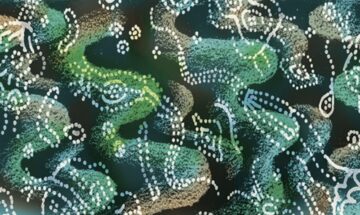Georgia Ray at Asterisk:
 Recently, a team at Stanford University fished something new out of the vast, uncharted, and almost entirely unclassified world of genetic material sometimes known as biological dark matter. They called it an “obelisk,” a shell-less RNA of maybe 1,000 base pairs (shorter than any viral genome), which seems to self-organize into a rodlike shape. It appears to be the structural equivalent of a plant viroid or a fungal ambivirus, two other bits of self-replicating genetic material whose discovery widened the boundaries of what we know about microbiology. But the obelisks weren’t found in either plants or fungi. They were discovered in human intestines.
Recently, a team at Stanford University fished something new out of the vast, uncharted, and almost entirely unclassified world of genetic material sometimes known as biological dark matter. They called it an “obelisk,” a shell-less RNA of maybe 1,000 base pairs (shorter than any viral genome), which seems to self-organize into a rodlike shape. It appears to be the structural equivalent of a plant viroid or a fungal ambivirus, two other bits of self-replicating genetic material whose discovery widened the boundaries of what we know about microbiology. But the obelisks weren’t found in either plants or fungi. They were discovered in human intestines.
An obelisk, in other words, is a probably replicating entity, contained in a mere thousand or so letters of the genetic alphabet, with zero genetic similarity to anything known to exist already. What does it do? How did it get there? Does it cause disease? We have no idea. We first picked up the phone this year (the preprint announcing its discovery was published in January 20241 ). It is a complete stranger calling from inside the house.
More here.
Enjoying the content on 3QD? Help keep us going by donating now.
